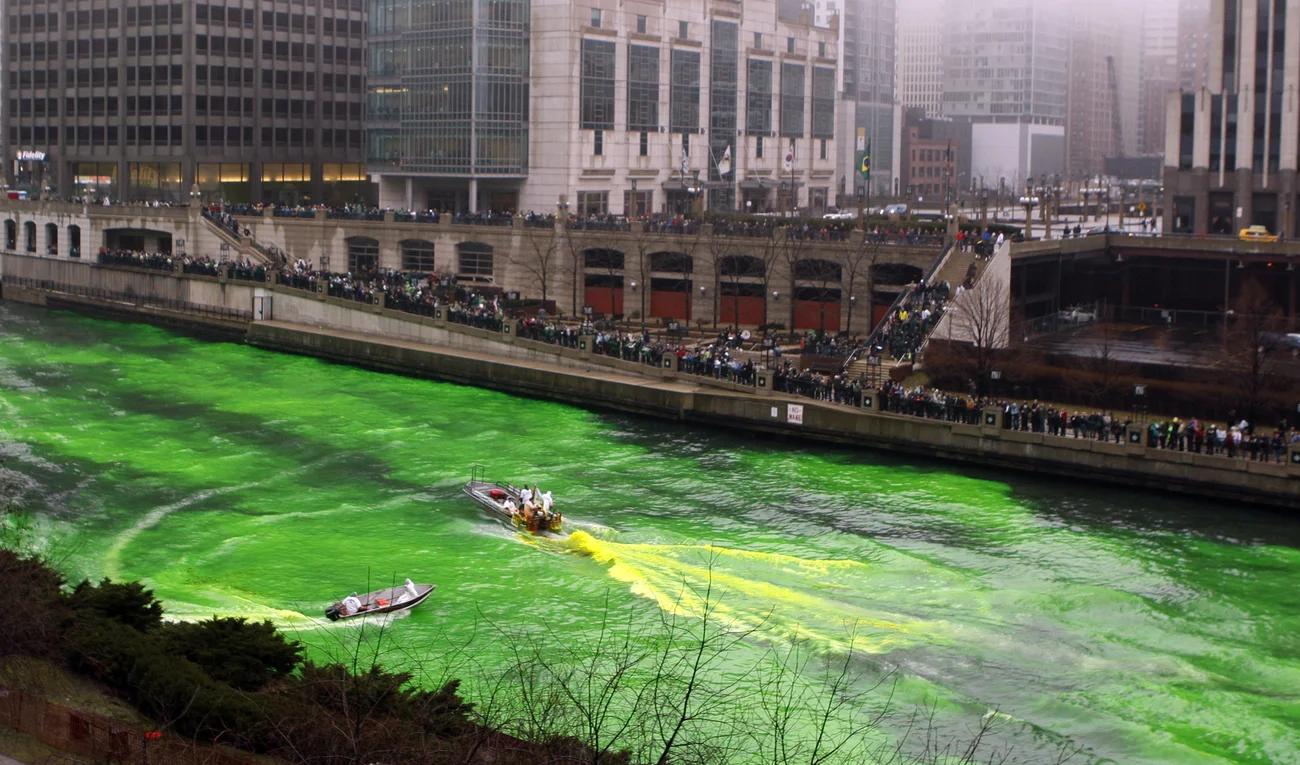Dyeing the Chicago River green is a St. Patrick's Day tradition. How did it start?
In 1962, Chicago city workers dumped 100 pounds of dye into the river flowing through downtown Chicago. It left the river emerald green for an entire week and kick-started an annual tradition. The city celebrates the 60th anniversary of the event this past weekend.
The dyeing of the Chicago River has become synonymous with St. Patrick's Day celebrations in the United States, but where did the tradition originate?
The green dye was originally part of the city's effort to clean up the river's waterfront areas, which had long been a depository for Chicago's waste. So much so that Upton Sinclair mentioned one of the river's tributaries, Bubbly Creek, in his famous novel The Jungle.
Bubbly Creek got its name from the methane gas bubbles that would regularly rise to the surface due to discard nearby from a large slaughterhouse.
Turning the Chicago River Green for St. Patrick's Day
As the city grew in size, efforts to clean the river increased, including the construction of waste treatment plants and even a canal that permanently reversed the flow of the river, bringing clean water from Lake Michigan into the mouth of the river.
When Richard J. Daley took office as the mayor of Chicago in 1955 he was determined to develop the riverfront and tasked city workers with finding where the sewage was coming from. They used the green dye to help identify the source of the waste.
Although Daley had originally proposed dyeing part of Lake Michigan green to celebrate St. Patrick's Day, he was persuaded by his friend Stephen M. Bailey, who was the business manager of the Chicago Plumbers Union, to dye the more manageably sized Chicago River instead and a tradition was born.
The dye used was originally an oil-based product, but has since been changed to a power, which ironically is orange, and the formula is a closely guarded secret.
"Illinois EPA has never required a National Pollutant Discharge Elimination System (NPDES) permit so there is no way to know what the dye is or whether it is harmless," said Margaret Frisbie, executive director of Friends of the Chicago River, in a statement. to NPR.
In the past the city has experimented with ways to distribute the powder, with Chicago Alderman Edward Burke telling NPR in 2013: "One time we used fire remedy, thinking that would help dissolve it quicker." Living up to its namesake, The Windy City, the powder covered the Wrigley Building and more than 100 cars instead.
Today the orange powder is spread by two motorboats. One dumps the powder and the other stirs the water, turning the river completely green within minutes.
And although the dye used in the river is said to be harmless, advocacy groups such as the Friends of the Chicago River are worried the practice encourages copycats who may be using unapproved dye in other portions of the river.
https://sites.google.com/view/boomidiadeal/home
https://boomidiadeal.business.site
https://boomdiadeal.webflow.io/
https://webflow.com/boomidiadeal
https://boomidiadeal.blogspot.com/2021/10/boomidiadeal-store-all-t-shirts.html


Comments
Post a Comment